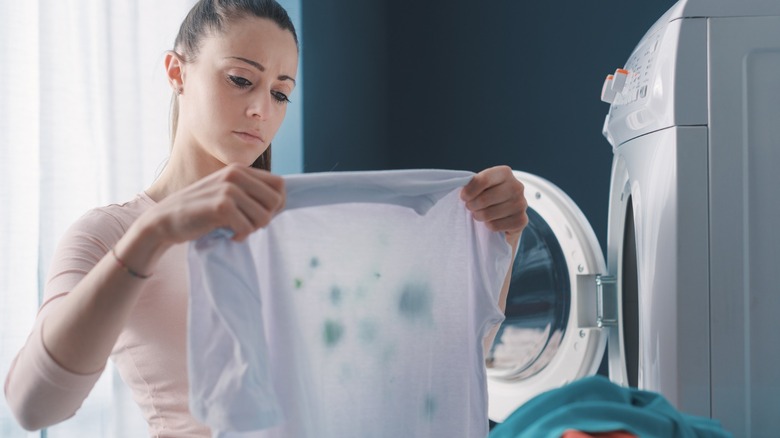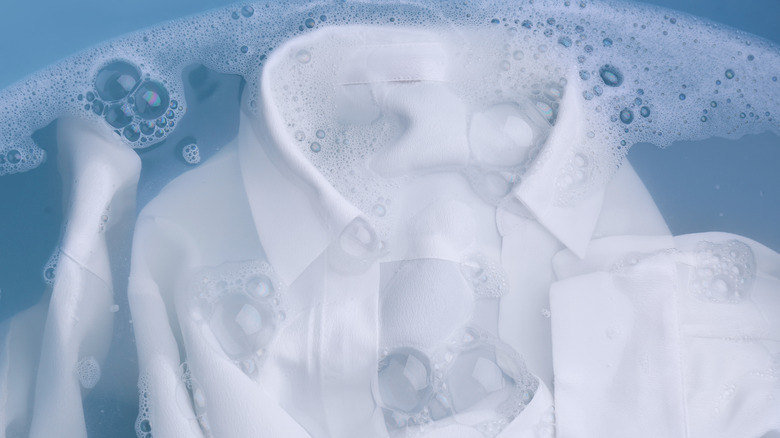The Best Way To Remove Pesky Detergent Stains From Your Clothes And Sheets
Believe it or not, the laundry detergent you rely on to get your clothes fresh and clean may actually be the culprit behind staining. Why does this happen, and how do you spot it so it can be fixed? According to Whirlpool, blemishes caused by laundry soap might show up as blue or white splatters, a rough texture, or stiffness. They can occur with excessive detergent use, which Wirecutter explains also prohibits the friction required to release dirt from within the fabric. A single tablespoon should be sufficient for a normal-sized load. Additionally, a deviation from the manufacturer's directions, hard water, or a too-full washing machine can leave soap unable to dissolve thoroughly. If you're inclined to overfill your washer in an attempt to be efficient with time, water, and energy, Domestic & General says it's not a good practice; it can damage the machine's inner tub, or drum. It could also create the need for a second wash for the same load, which increases wear on fabrics and the machine, and in the long run, isn't practical.
One day, you may discover detergent residue or blotches on your just-washed garments, whether a complete mystery or through overzealous habits. We won't try to convince you to change. Instead, we're sharing tips for removing the annoying stains below.
How to remove detergent stains
Whirlpool tells us that discoloration caused by laundry detergent is usually temporary if attended to quickly by soaking the affected item in warm or hot water according to the care label. Next, follow up with an oxygen-based stain remover such as OxiClean Versatile Stain Remover, recommends Your Best Digs. Alternately, Get Set Clean suggests immersing the garment in a water bath with a cup of white vinegar for 15 minutes. Gently rub the stains with a soft brush or your fingers, and allow the item to soak for an additional half hour. Lastly, Wirecutter offers a technique called laundry stripping, which aims to remove any accumulation of laundry products and body oils with a long soak in a combination of water, borax, washing soda, and detergent. Additionally, Wirecutter notes that liquid detergent, as opposed to pods, affords more control over the amount of product used, leading to less build-up. These methods all require a second laundering.
Wash Day Laundry Centre claims small stains can be spot-treated with a bar of soap and run through a wash cycle without detergent. On the other hand, Whirlpool advises applying a pretreatment option to dampened fabric and finishing with a warm water rinse after the instructed wait time. As a preventative measure, Whirlpool suggests turning clothes inside out before laundering to avoid visible stains, and cautions against placing items in the dryer before new stains have been removed because the heat can set them permanently.

